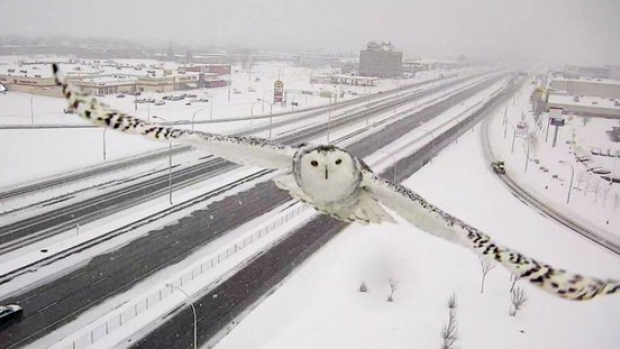by Steve Selden | Nov 8, 2018 | Tour News
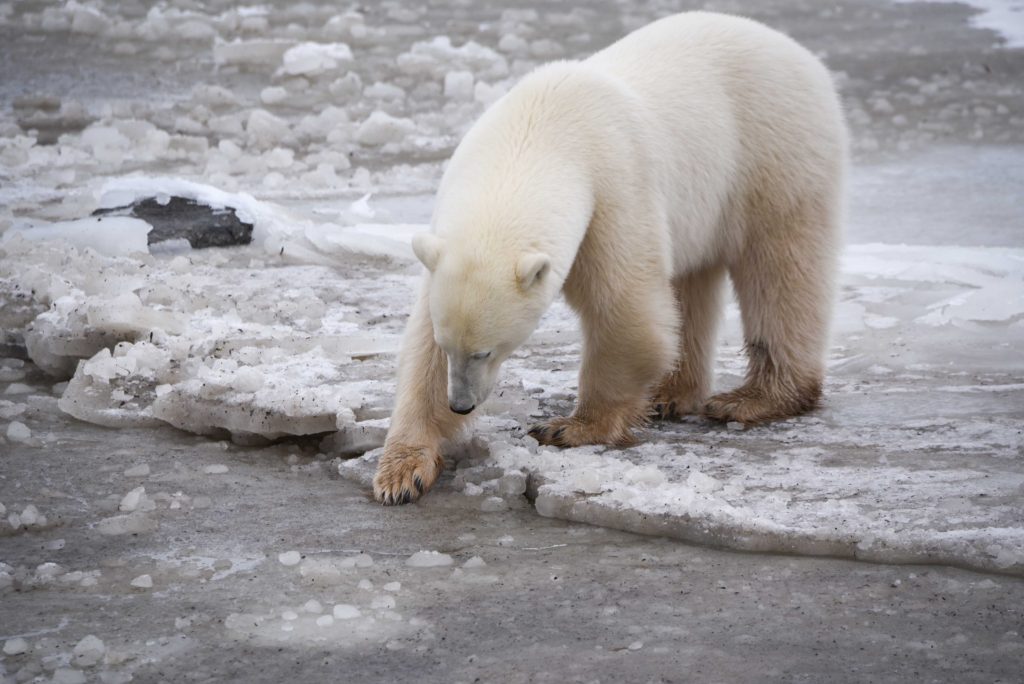
A polar bear tests the ice along the Hudson Bay. Colby Brokvist photo.

Polar bear sensing the air in the Churchill Wildlife Management Area. Colby Brokvist photo.

Fantastic red fox close up in Churchill. Colby Brokvist photo.
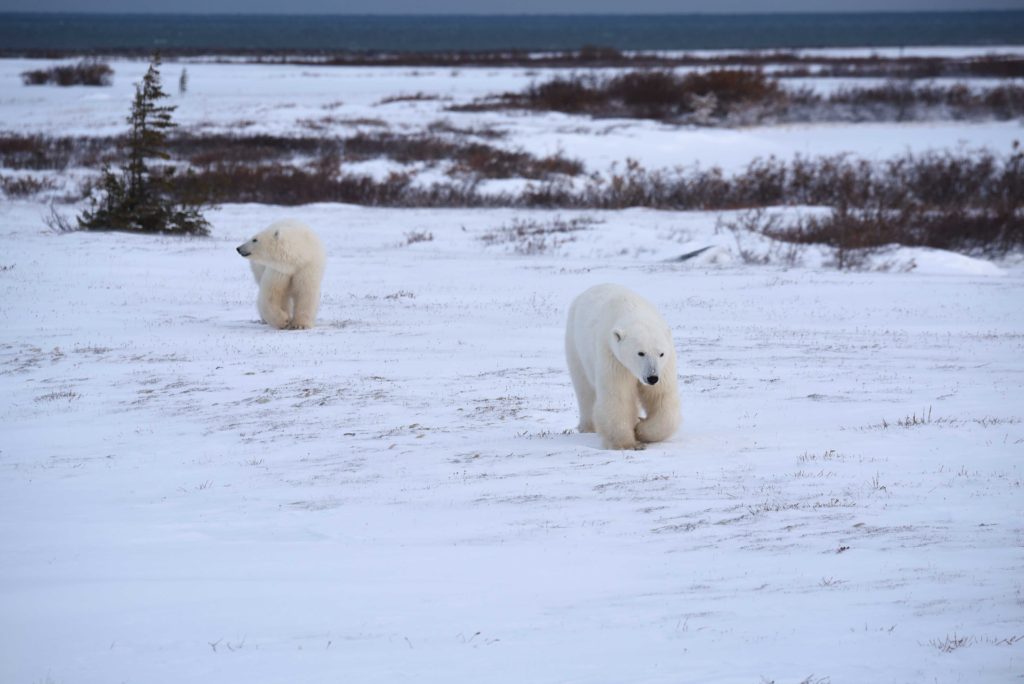
Polar bears roaming the tundra in Churchill. Colby Brokvist photo.
The tundra in the Churchill Wildlife Management Area is alive and bustling with Arctic wildlife. Polar bears, Red and Arctic foxes, as well as Ptarmigan, are being spotted throughout the region. With the polar bear season in full gear, the images are coming fast and furious. This polar bear season has about two weeks to go and the scene is set for incredible culmination out on the snow-covered tundra of the Churchill Wildlife Management Area. Keep watching for more news and images from the north!
by Steve Selden | Nov 6, 2017 | Tour News
These field notes are from Natural Habitat Adventures guide Eddy Savage from Churchill where he is enjoying guiding travelers around town and primarily out on the tundra of the Churchill Wildlife Management Area. The Tundra Lodge is an amazing place to observe polar bears and other Arctic wildlife while becoming immersed in the tranquil feeling of the open tundra of the north! This first-hand description of the Lodge’s welcoming warmth is spot on. The wildlife details as well are quite incredible with activity all over the land!
“This was my first visit of 2017 to the Tundra Lodge. It was great to connect with the fantastic chefs Shayne and Shelley. These two make a seriously incredible team. They have an air of calm and professionalism and quickly make our guests feel at home with their delicious food choices. Sinking your teeth into one of Shelley’s fresh baked cookies, or sipping on Shayne’s miraculous yam soup, you will forget you are miles from a town and sitting in the middle of a rugged and beautiful landscape. They make you feel at home in their dining room. It’s a great feeling.

A polar bear basks in the cold with visions of ice on the Hudson Bay. Bonnie Chartier photo.
Krys, the Tundra Lodge Manager is on top of every problem and really assures our groups that they are his most important priority. Every detail is looked after and he keeps a sharp eye for wildlife around the lodge as well. On more than one occasion this season he has been the first to alert our group of approaching polar bears. A serious asset!
Jason is our talented rover driver. Moving our groups on and off the tundra every morning and afternoon. He has over 16 years experience driving rovers and has memorized the shape and shades of the land. His eye is sharp and often spots hard to see animals like snowy owls, ptarmigan, or Arctic hare far before any of us can see it. You can tell he loves being out in the rover with the groups as he is often ecstatic when we have a good wildlife encounter!
The team at the lodge is remarkable and they really give more than expected on a daily basis. As an expedition leader, working alongside Shayne, Shelley, Krys, and Jason is as good as it gets.
We have had a wide variety of sightings this year. As posted by Colby Brokvist, we had an incredible encounter with what we suspect to be two young Arctic Fox. Chasing each other too and fro across piles of kelp tossed ashore by humongous Hudson Bay seas, our entire Tundra Lodge group was privy to what was certainly a world class moment. Bonnie Chartier, a founder of eco-tourism in Churchill and Natural Habitat Adventures Expedition Leader said that was something she had never seen before. That really says something about the experience.
There seems to be a real abundance of lemmings around this year and sightings of snowy owls, red fox, and Arctic fox are high. Many groups have seen fox hunting for lemmings. Zig-zagging across the tundra listening and watching for movement. When they hone in on a lemming they leap fully into the air and land square on top of them. They are catching more then they can eat and caching them for later access.
When we look at our polar bear sightings, well it is hard to offer an all-encompassing description. Sightings have been great. We seemed to have “dinner bears” regularly. We had two nights where as soon as all of the group was served their entrees, a polar bear would come by and visit the lodge. They would peer into the lodge, seemingly curious about all of the shuffling and lights. It is important to note that these bears are not coming to the lodge to eat food, but instead, intrigued by the interesting sounds, lights, and smells, have come by out of curiosity. We do not feed the bears and will not tolerate that behavior. Our guests were ecstatic. There are few better ways to be interrupted during a meal than to have a polar bear sitting 10 feet below you. Cool.

Polar bear by the tundra lodge. Eddy Savage photo.
On our second night at the lodge, the aurora borealis came out for us. It was partly cloudy but it still managed to be strong enough to see. Just another cool thing our guests got to see!
Our days on the rover were exciting too. We had ample polar bear sightings with many coming right past the rovers. On top of that, the other arctic wildlife in the area was out in force. During our day rovers on the tundra, our groups saw a silver fox, cross fox, and arctic fox hunting for lemmings. We had a few up close visits from the cross fox where one even cached a lemming about 40 feet from the rover. So amazing. All of our guests saw multiple snowy owls and had a great sighting where one sat close to the polar rover trail and allowed our group take some incredible images.

A cross fox seems content after catching a lemming. Konan Wendt photo.
After our few days out exploring the tundra and enjoying the comforts of the unique Tundra Lodge, we had to fly back to Winnipeg. On our last morning, we set off at 7 am and maybe 50 feet away in the headlights was a snowy owl perched on top of a tree. An awesome farewell to an incredible trip.
When in Churchill, we went dog sledding with the founder of the Hudson Bay Quest, Dave Daley. Everyone had a blast!”
by Steve Selden | Nov 3, 2016 | Tour News
Churchill is in full swing with polar bears “high and low” as you can see from these recent field image submissions from the region. Moira Le Patourel leading a group of Natural Habitat Adventures travelers had a spectacular time in Churchill. The snow covered tundra provides an Arctic background for the incredible wildlife sightings in the Churchill Wildlife Management Area (CWMA). What a trip for this fortunate group.
Polar bears scattered on the tundra of the CWMA were the highlight for sure though a bear lift at the holding compound was an event that is hit or miss for travelers to Churchill. It truly is spectacular to watch polar bears be flown northwest along the coast to a safe haven and released to the wild again. Timing is everything in order to catch one of these awesome spectacles! An incredible, unique experience if you can see it.

Group photo with guide Moira in front of a polar rover! Moira Le Patourel photo.

A polar bear wandering between a couple of polar rovers. Moira Le Patourel photo.

Magnificent polar bear in the snow. Moira Le Patourel photo.

Polar bear family walking a trail in the CWMA. Moira Le Patourel photo.

Polar bear sniffing at the falling snow. Moira Le Patourel photo.

Polar bear family posing for a group shot. Moira Le Patourel photo.

Lift off at the Polar Bear Holding Facility. Moira Le Patourel photo.

Up, up and away in the cargo nets for polar bear family. Moira Le Patourel photo.
While the polar bears on the land and in th air were exciting for all travelers, there was other wildlife to see as well. A regal red fox appeared from the willows to catch the eyes and camera lenses of the group. Ptarmigan as well made an appearance seemingly from out of nowhere. Both species reveal the secrets of the sub – Arctic to all those lucky enough to spot them. Magic seems to happen in Churchill especially during polar bear season!

Red fox emerging from the willows. Moira Le Patourel photo.

Willow ptarmigan on the rover trail in the CWMA. moira Le Patourel photo.
by Steve Selden | Oct 17, 2016 | Tour News
The exciting news from Churchill is polar bears have been spotted out at the Tundra Lodge in the Churchill Wildlife Management Area (CWMA) and they are becoming more active as the season begins here. The first Natural Habitat Adventures group at the lodge guided by Colby and Eric came quite close to a big male bear out by first tower as their group explored away from the base lodge on a rover. A few others lounged around the lodge moving about the willows.
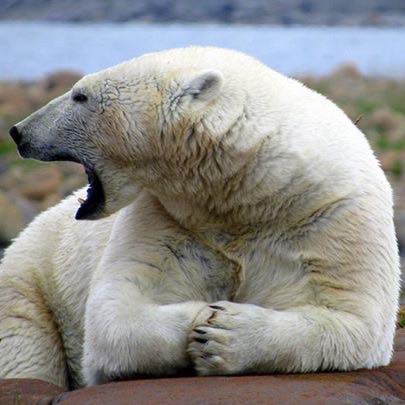
Majestic polar bear resting in Churchill. Katie DeMeulles photo.
More exciting news from polar bear season Churchill is there are still at least 30 – 40 beluga whales still lingering around the mouth of the Churchill River and along the coast in the Hudson Bay. Some travelers took a helicopter journey and spotted the beluga pods below..what a sight for this late in the fall! I imagine there will be some more time for beluga’s here though soon they will depart for the Hudson Straits up north.
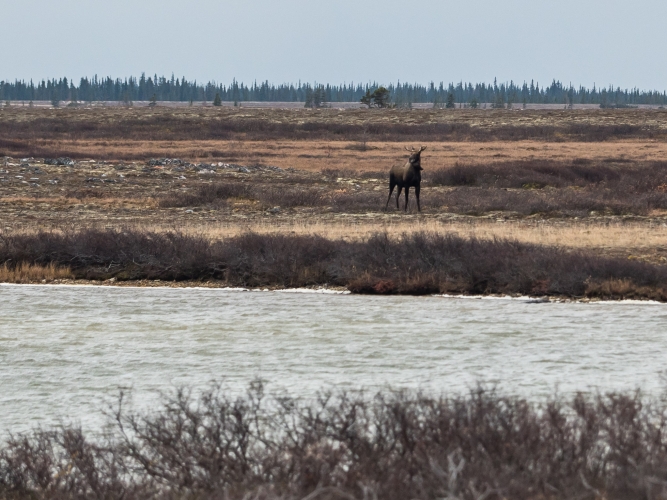
Moose on the tundra in Churchill. Madison Stevens/PBI photo.
Other sightings by our friends at Polar Bears International (PBI) included numerous black foxes- a color morph of the red fox – as well as traditional colored red foxes. A couple of Arctic fox have been spotted as well. Ptarmigan, Arctic hares and numerous bird species have also filled out the wildlife sightings for travelers over the past week. PBI travelers also were surprised by a large moose galloping along the tundra between ponds out in the CWMA!
Northern lights made an appearance on a couple of nights and were some of the best since last aurora season in February. Greens and pinks shimmered across the tundra in the darkened sky of the CWMA.
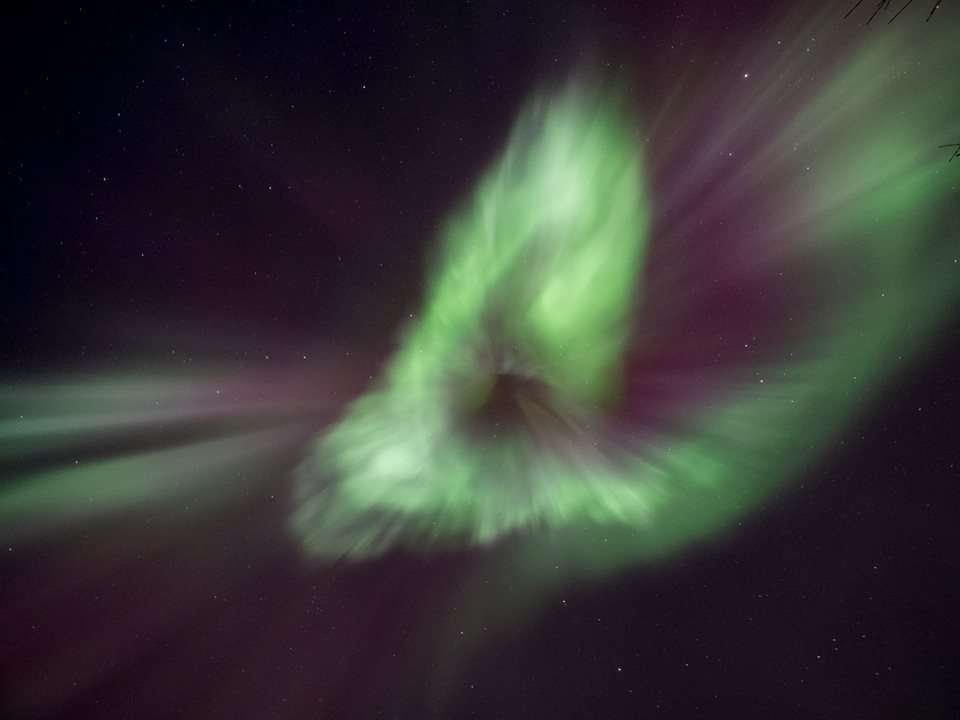
Intense northern lights in Churchill. Drew Hamilton photo.
Perhaps the most incredible sighting was also by the PBI group. They witnessed a Peregrine falcon feeding on a gull on the fringe of the willows. They observed the web of nature and the life-cycles of these hearty creatures firsthand!
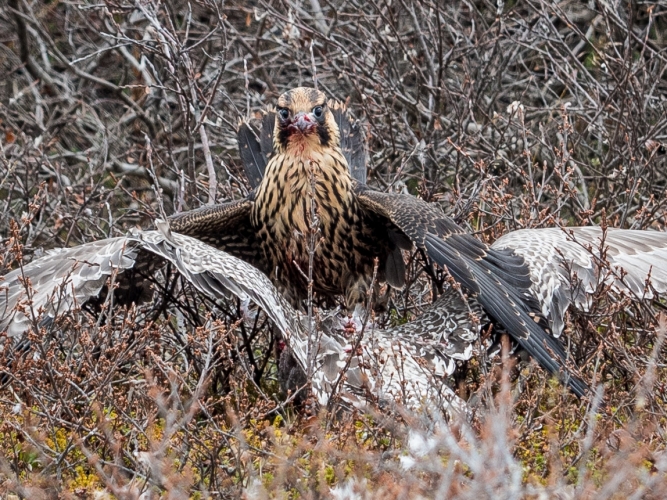
Peregrine falcon feasting on prey of a gull. Madison Stevens/PBI photo.
We are only in the first full week of polar bear season and already are witnessing surprises from every area out on the tundra!
by Steve Selden | Jan 7, 2016 | Conservation
The snowy owl is the largest owl – by weight- and certainly the most photogenic with its’ regal white feathers and stunning yellow eyes. Birders and travelers from around the world venture north to the Arctic to catch a glimpse, and sometimes more in heavily populated years. Summers are spent deep in the Arctic to take advantage of the 24 hour sunlight that enhances chances to gather more prey such as lemmings and ptarmigan. In bountiful years when the lemming population is prolific, snowy owls can rear twice or three times the number of young. The two species are intertwined.

Snowy owl flying right into view of a traffic camera in Montreal, Quebec. transport Quebec photo.
Snowy owls are prevalent in Churchill during polar bear season in October and November. Last season, high numbers of sightings across the tundra drew the awe of people whom had ventured to the polar bear capital of the world mainly to see the bears. However, the magnificent owl always seems to create a lasting impression on the groups. Though the seasonal fluctuations are sometimes frustrating to travelers and in particular birders that journey to Churchill to see the species, there is a pretty basic explanation for the changes year to year. Why do we have these vastly different numbers in various seasons?
Lemmings in particular are a unique prey species for snowy owls. Lemmings prey upon tundra mosses and will remain in an area until their food supply has been exhausted. Unlike voles that eat grasses which replenish naturally fairly quickly, the mosses that lemmings eat take years to regrow. Therefore they move to another region and the predators such as snowy owls follow. The lemming population crashes after reaching a peak density and the owls emigrate to greener pastures or, at least those with healthy moss populations. There they will usually find lemming populations…and the cycle continues. The theories that lemming populations decrease due to predators such as foxes, owls and other raptors in a region is simply not true. The available vegetation is the key to the cycle.
